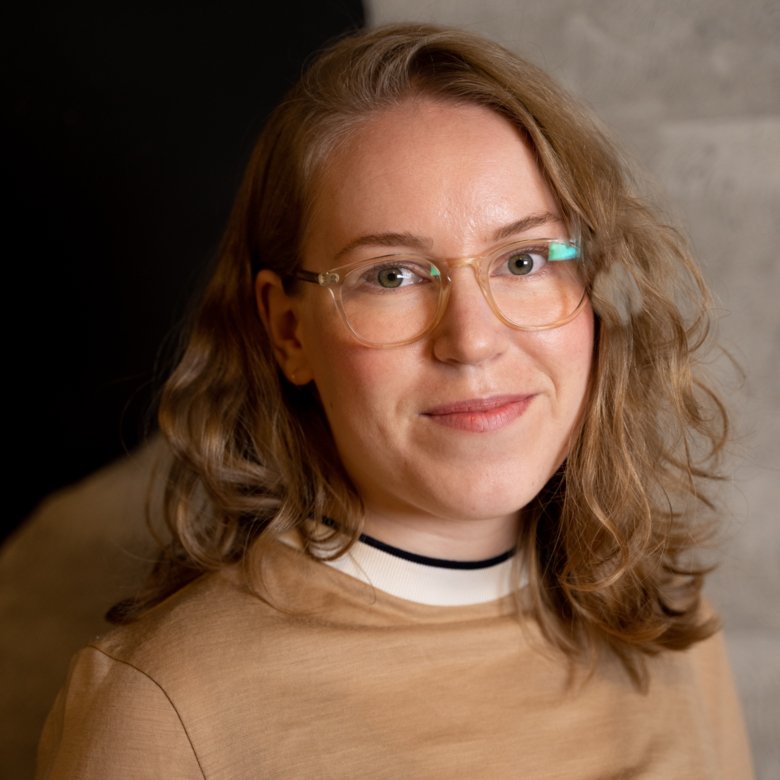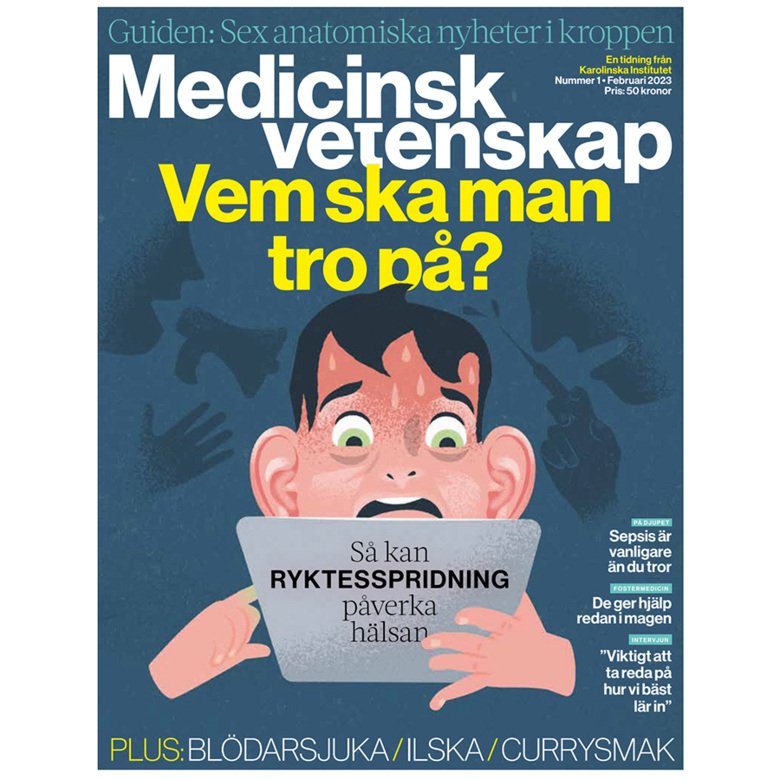Psychiatry: When today's diagnoses are not enough

You may know about depression and ADHD - but what about the p factor, emotion regulation and symptom networks? We need more concepts for mental health difficulties, say researchers.
Text: Ola Danielsson for the magazine Medicinsk Vetenskap nr 2, 2023
Psychiatric diagnoses such as depression and ADHD play an important role in healthcare, research and in people's minds. However, it would be good if we could think a bit more outside the diagnosis box, according to some researchers.
But first - what is a psychiatric diagnosis?
Most of them are collected in the DSM psychiatrist handbook, which is used by psychiatrists and psychologists to support diagnosis (see fact box). Expert groups agree on which diagnoses to include and how to define them.

Diagnostic manual provides order
Mats Adler, a researcher on the development of psychiatric diagnostics at the Department of Clinical Neuroscience, Karolinska Institutet, explains that this is a big step forward from the diagnostic chaos that prevailed before.
“Before 1980, when DSM-III was introduced, the same set of symptoms could be given different diagnostic labels in different countries, at different clinics or even by different psychiatrists at the same clinic. Thanks to the DSM, we have a common map of psychiatric diagnoses that guides both healthcare and research,” says Mats Adler.
At the same time, many diagnostic names have found their way into everyday language, taking on a slightly different meaning and perhaps a bit too much of a central role, he says.
“For example, you might say that you feel a bit depressed or have a bit of ADHD. There is a confusion where concepts that are actually tools in diagnostics and research take on a different role in people's self-understanding,” says Mats Adler.
Facts: Two diagnostic systems
The Diagnostic and Statistical Manual of mental disorders (DSM) is an international handbook describing psychiatric conditions. Sweden officially uses the International Statistical Classification of Diseases and Related Health Problems (ICD), which is largely consistent with the DSM.
Knowledge of causes is lacking
A diagnosis in the DSM is defined as a collection of symptoms that tend to occur together. They also often provide important information on the prognosis and treatment of the condition and are important as a basis for research and statistics.
“But despite extensive research, the underlying mechanisms - the causes - of most conditions have not been identified,” explains Mats Adler. This is different from many physical diagnoses, such as diabetes or COVID-19, which link symptoms to a specific known disease mechanism in the body.
“A diagnosis is generally a designation of a disease state, and central to the concept of disease is the existence of a unique cause or mechanism of disease,” says Mats Adler.
“There are also historical reasons why DSM diagnoses are based on symptoms instead,” explains Mats Adler.
“In the past, Freud and psychoanalysis were dominant in psychiatry. Psychiatric conditions were explained as reactions to subconscious processes or the relationship with parents. So there were ideas about origin of mechanisms and causes, but an increasing number of people considered them unscientific,” says Mats Adler.
Instead, a system was created that avoids assumptions about the causes of psychiatric conditions - or “disorders” as they are called in the DSM.
If a diagnosis describes what it is supposed to describe, researchers say it has good validity. Validity can be defined in different ways, but according to Mats Adler it is generally lower for psychiatric diagnoses than for those physical conditions where specific tests have been developed that can confirm that the symptoms have a certain underlying mechanism, such as a blood test, imaging technique or tissue sample.
“Psychiatry is less advanced in terms of validation. There are still no objective tests for almost all conditions. But as more research is done on different diagnoses, the hope is that they will become more valid,” says Mats Adler.
Mental health problems are often gradual
However, mental health problems do not naturally follow all the divisions outlined in the diagnostic system. One problem is that diagnoses are binary categories that people either belong to or not. But many mental health problems appear as a gradual scale.

“Psychological traits often follow a normal distribution, much like body length. People at the far end of the scale can have problems, but there is no exact limit,” says Erik Pettersson, researcher at the Department of Medical Epidemiology and Biostatistics, Karolinska Institutet.
In addition, there is an overlap between diagnoses, so that a person who meets the criteria for one diagnosis often meets the criteria for several diagnoses. The genetic risk of having mental health problems also does not always seem to follow the classification of diagnoses.
“Many genes together can increase the risk of a diagnosis, but they also increase the risk of all other diagnoses," says Erik Pettersson.
The Hierarchical Taxonomy of Psychopathology (HiTOP) research approach tries to take this into account by describing mental illness as a hierarchical system of varying factors. At the top is the so-called p factor, which describes an individual's risk of developing any form of mental health problem.
Erik Pettersson showed in a study a few years ago that the p factor predicts unfavourable outcomes, such as suicide, crime or drug abuse, as accurately as the so-called g factor, a measure of intelligence, predicting, for example, a high level of education.
“The most dedicated HiTOP advocates think it can replace the DSM,” explains Erik Pettersson. He suggests using the p factor as a complement.
“It is no more complicated than combining different measures of mental health and adding up a person's risk score. A high p factor indicates that the person may need more support, even if they have the same diagnosis as someone else,” he says.

Examines alternative approaches to the DSM
Another research initiative, Research Domain Criteria (RDoC), seeks to explain the origins of mental health disorders by looking at basic functions, such as the ability to regulate emotions, rather than diagnoses. Maria Åbonde Garke, a researcher at the Department of Clinical Neuroscience at Karolinska Institutet, has been inspired by this approach in her thesis on emotion regulation and psychiatric comorbidity - where she also examines alternative approaches to the DSM diagnoses.
“I wanted to get closer to the philosophical question of what psychopathology is. Is it something we can see in the body or is it also something we create linguistically? And how do we put this into practice within healthcare?” asks Maria Åbonde Garke.
There is nothing strange about having multiple diagnoses - for example, you can have a cold and diabetes at the same time. But psychiatric diagnoses do not accumulate by chance, says Maria Åbonde Garke.
“One can suspect that some conditions do not just happen to occur at the same time, but that they are linked and have common causal mechanisms,” she says.
Emotion regulation important in several diagnoses
Research has shown that problems with regulating emotions are common to several diagnoses, such as eating disorders, anxiety and substance abuse. This opens for the idea that problems with emotion regulation can manifest themselves as a certain diagnosis at one point in time and as another diagnosis later on.
“It could be that a symptom, such as binge eating, could be a way for a person to reduce anxiety. Even if the symptom resolves, the person may still have fundamental difficulties with emotion regulation, which can lead to, for example, drinking instead in order to reduce anxiety,” says Maria Åbonde Garke.
In a study on eating disorders, she looked at registry data from eating disorder clinics, examining how the frequency of various eating disorder-related behaviours such as vomiting and excessive exercise changed over a year, and whether there were links to changes in other areas such as self-harm and alcohol consumption.
“Most improved during the study period. But we saw that almost 20 percent of the group switched symptoms. When they got better in one area, they got worse in another,” says Maria Åbonde Garke.
These “symptom shifters” are a group that risks being missed when there is a focus on diagnosis because addictions and eating disorders are treated in separate clinics, says Maria Åbonde Garke.
Maria Åbonde Garke sees a growing interest in transdiagnostic approaches, both in healthcare and research. For example, there are now transdiagnostic psychological treatments for anxiety and depression that work as well as specific treatments.
“It is also becoming more common for research studies to look for people who have problems with aspects other than a traditional diagnosis, such as emotion regulation,” she says.
Facts: Some diagnostic problems
Psychiatric diagnoses according to the DSM have been criticised for being...
...square: Diagnoses are distinct categories but mental health problems can exist on a continuum.
...non-specific: There are several ways to fulfil the criteria for a diagnosis, which can raise questions about what people with certain diagnoses have in common. According to one study, over 1,000 different combinations of symptoms can lead to a diagnosis of major depression, and two people can be diagnosed without sharing a single symptom.
...numerous: A patient with a psychiatric diagnosis often has multiple diagnoses. It is called co-morbidity, but many researchers believe it is more likely to be explained by underlying problems common to several diagnoses.
Sources: Interviewees, Fried EI & Nesse RM, J Affect Disord Feb 2015

Symptom networks provides an overview
Lars Klintwall, clinical psychologist and researcher at the Department of Clinical Neuroscience, also believes that transdiagnostic problems such as emotion regulation are promising to study, and should be seen as pieces of a larger puzzle.
“An individual patient often has many problems at the same time, and the problems interact both with each other and within the context of the patient. The challenge for future diagnostics is that we want to both capture this complexity, and at the same time highlight what different patients have in common so that we can generalise between them,” he says.
Lars Klintwall's proposed solution is symptom networks. This is based on the observation that one symptom can exacerbate another.
“For example, if you have the symptom of problems focusing and the symptom of sleep problems, it is reasonable to think that the symptoms are related. It does not have to be due to an underlying disease, but you can simply have problems focusing due to sleep problems,” says Lars Klintwall.
By mapping an individual's symptoms in a network, it is possible to see how they affect each other. Of particular interest are “loops”, vicious circles of symptoms that perpetuate each other. These are the ones that a treatment intervention should focus on trying to break.
“They do not have to be symptoms in the context of the DSM. For teenagers, for example, procrastinating on schoolwork is often part of the maintenance loop.”
By comparing many individuals' networks, Lars Klintwall imagines that it is then possible to look for common maintenance loops. For some interactions, it may be interesting to study the biological basis, he believes.
“We know that biology and environment interact, but it is often unclear how this works when talking about a broad diagnosis. Symptom networks open up the possibility of studying specific mechanisms in a structured way,” he says.
Attractive in theory but difficult in practice
Lars Klintwall finds symptom networks attractive in theory - but so far difficult in practice. A common method for examining the relationships is time series analysis at the individual level. But researchers need to figure out which symptoms should be included in the networks and on what time scale they interact. For example, it may take several weeks for sedentary activities to lead to fatigue, but only a few minutes for anxiety to trigger suicidal thoughts. Everything needs to be measured and fed into the same network - and how do you do that?
Lars Klintwall's research explores whether networks can instead be built on the basis of self-assessments of causes.
“We are testing this on different groups, such as teenagers and patients with psychosis, long-term pain or hazardous drinking. A preliminary version of the method is available for those who want to test it on their patients,” he says.
Symptom networks are a fairly new idea, but according to Lars Klintwall, there are a few studies that have shown that they can help patients through increased individualisation of treatment, for example in eating disorders. But there is no revolution going on - yet.
“It would be premature to replace DSM at this stage, but we have to keep exploring alternatives until we find something that delivers better,” says Lars Klintwall.
About the magazine Medicinsk Vetenskap
 Photo: Jens Magnusson
Photo: Jens MagnussonRead more articles about medical research
Read about the latest in medical science in Karolinska Institutet's Swedish language popular science magazine Medicinsk Vetenskap. Subscribe now!
